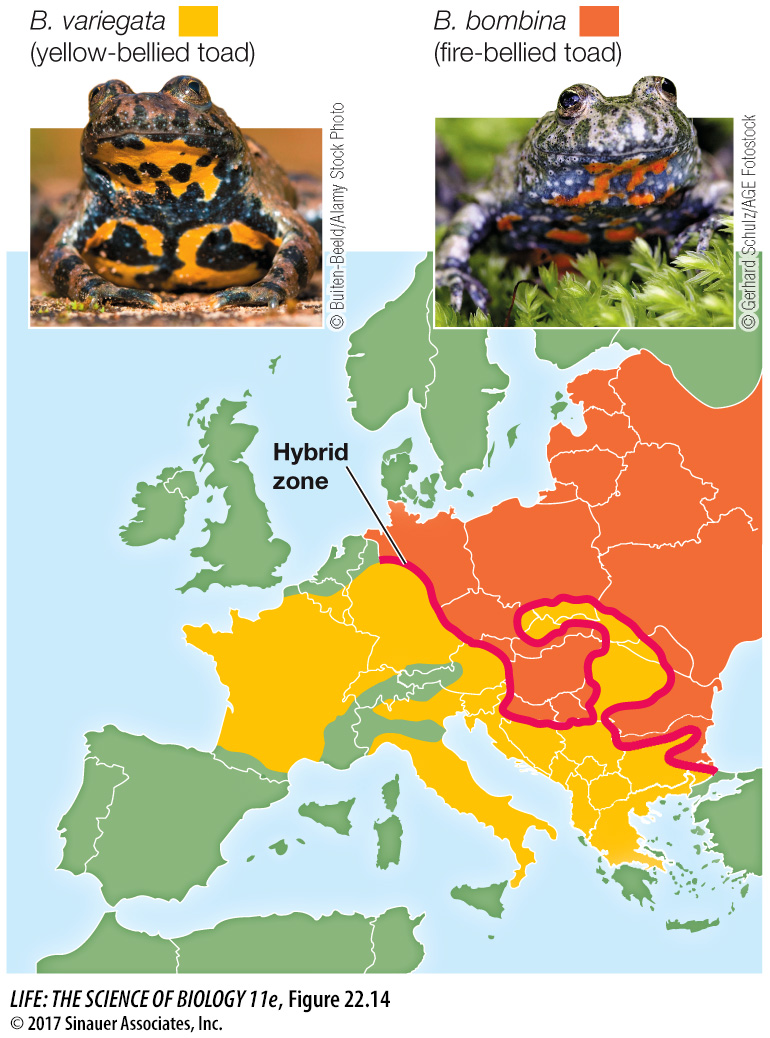Unless reproductive isolation is complete, closely related species may hybridize in areas where their ranges overlap, resulting in the formation of a hybrid zone. When a hybrid zone first forms, most hybrids are offspring of crosses between individuals of the two hybridizing species. However, subsequent generations include a variety of individuals with varying proportions of their genes derived from the original two species, so hybrid zones often contain recombinant individuals resulting from many generations of hybridization.
Detailed genetic studies can tell us why narrow hybrid zones may persist for long periods between the ranges of two species. The fire-bellied toad (B. bombina) lives in eastern Europe; the closely related yellow-bellied toad (B. variegata) lives in western and southern Europe. The ranges of the two species overlap in a long, but narrow zone stretching 4,800 km from eastern Germany to the Black Sea (Figure 22.14). Hybrids between the two species suffer from a range of defects, many of which are lethal. Those hybrids that survive often have skeletal abnormalities, such as a misshapen mouth, ribs that are fused to vertebrae, and a reduced number of vertebrae. By following the fates of thousands of toads from the hybrid zone, investigators found that a hybrid toad, on average, is only half as fit as an individual of either species. The hybrid zone remains narrow because there is strong selection against hybrids and because adult toads do not move over long distances. The zone has persisted for hundreds of years, however, because individuals of both species continue to move short distances into it, continually replenishing the hybrid population.
